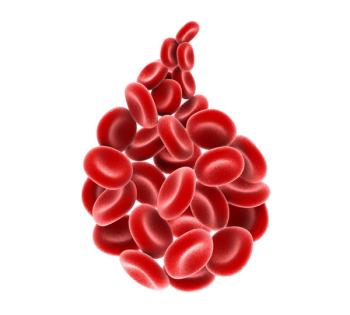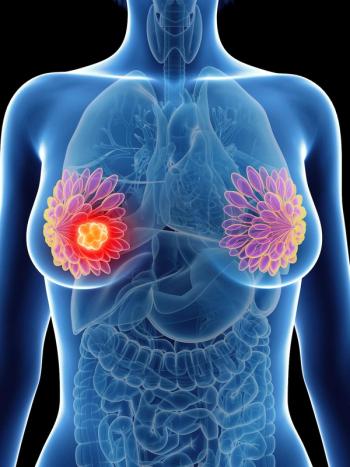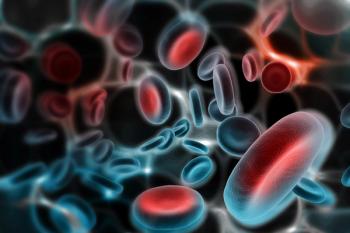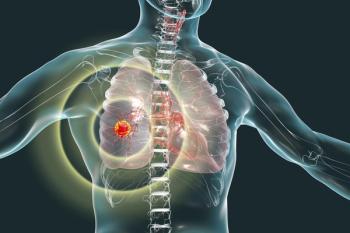
Niraparib/Bevacizumab Maintenance Prolongs Response in Pretreated Ovarian Cancer
Results from the NIRVANA-R trial found niraparib/bevacizumab maintenance yielded positive activity in pretreated ovarian cancer.
Maintenance niraparib (Zejula) plus bevacizumab (Avastin) showed promising activity for patients with platinum-sensitive ovarian cancer previously treated with a PARP inhibitor, according to results from the phase 2 NIRVANA-R trial (NCT04734665) presented at the
The median progression-free survival (PFS) was 11.5 months (95% CI, 7.9-not reached [NR]). At 6 months, the PFS rate was 68% (95% CI, 55%-85%) and at 12 months, it was 46% (95% CI, 31%-68%). The median follow-up time was 11.8 months.
Based on prognostic factors, the estimated 6-month PFS that were most relevant included complete response (CR) to the most recent therapy (88%), partial response (PR) to the most recent chemotherapy (56%), CA-125 less than 35 U/mL after the most recent chemotherapy (73%), CA-125 of 35 U/mL or more after the most recent chemotherapy (33%), treatment-free interval (TFI) at 24 months or more (85%), and TFI at less than 24 months (54%).
“The benefits were particularly evident in patients who responded well to previous platinum-based chemotherapy,” Hyun-Woong Cho, Department of Obstetrics and Gynecology, Korea University College of Medicine, Seoul, stated during the presentation. “[They had a] TFI of 24 months or longer after the penultimate chemotherapy; CR or normal CA-125 level in response to the most recent chemotherapy [also showed a benefit].”
Overall, 44 patients were enrolled in the trial. Prior to enrollment, patients were previously treated with platinum-based chemotherapy with or without bevacizumab and then went on to experience a CR or PR. After enrollment, maintenance therapy of niraparib given at an individualized starting dose plus bevacizumab at 15 mg every 3 weeks was administered until confirmed progressive disease.
Patients were enrolled if they had nonmucinous ovarian cancer and received prior PARP inhibitor treatment 12 months or more after penultimate chemotherapy.
The first patient was enrolled on July 5, 2021, the interim data cut-off was July 21, 2022, the last patient enrolled was on November 25, 2023, and the final data cut-off with a minimum of 6 months of follow-up was June 1, 2024. In stage 1, 22 patients were enrolled and if 12 or more patients did not have progressive disease, they could proceed to stage 2. At the interim analysis, 13 of 22 patients did not have progressive disease within 6 months. At the time of the data cutoff, 13 patients were still on treatment.
The median patient age was 60 years old, 75% had an ECOG performance status of 0, and 25% had a status of 1. Overall, 50.0% of patients had BRCA wild-type disease, 36.4% had BRCA mutated disease, and 13.6% had unknown origins. Of note, 65.9% of patients had 3 or more lines of prior chemotherapy while 34.1% had 2 lines of prior therapy.
Progression during previous PARP inhibitor therapy was noted in 68.2% vs 31.8% who had progression after, 86.4% received PARP inhibitors for 12 months or more vs 13.6% who received them for less than 12 months. Previous types of PARP inhibitor therapy included olaparib (Lynparza; 52.3%), niraparib (43.2%), and rucaparib (Rubraca; 4.5%).
The presentation highlighted that there were no new safety signals to report. Adverse effects (AEs) leading to dose interruption were noted in 59.1% of patients, AEs leading to dose reductions were noted in 22.7%, and AEs leading to treatment discontinuation were noted in 9.1%. The most common AEs included anemia, thrombocytopenia, neutropenia, hypertension, and proteinuria.
Reference
Cho HW, Park JY, Kim BG, et al. Phase 2 study of maintenance of niraparib rechallenge plus bevacizumab in patients with platinum-sensitive, recurrent ovarian cancer previously treated with a PARP inhibitor (KGOG 3056/NIRVANA-R). Presented at the 2025 Society of Gynecologic Oncology Annual Meeting on Women’s Cancer (SGO); Seattle, WA; March 14-17, 2025.
Newsletter
Stay up to date on recent advances in the multidisciplinary approach to cancer.


















































































